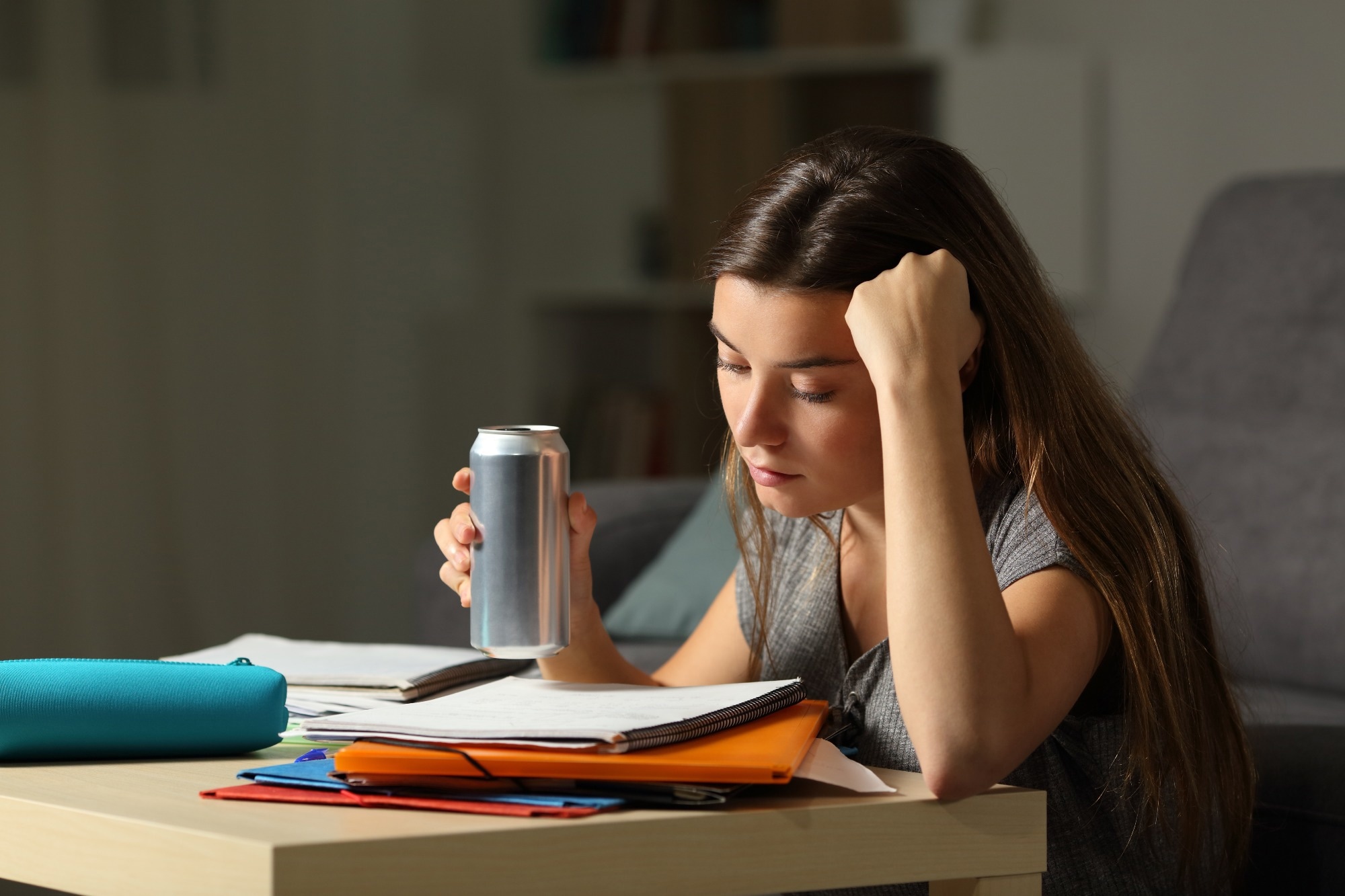In a recent study published in the journal BMJ Open, researchers evaluated the associations between energy drink (ED) intake and sleep characteristics among Norwegian students attending colleges and universities. They also examined whether there were sex-based differences.
 Study: Energy drink consumption and sleep parameters in college and university students: a national cross-sectional study. Image Credit: Antonio Guillem/Shutterstock.com
Study: Energy drink consumption and sleep parameters in college and university students: a national cross-sectional study. Image Credit: Antonio Guillem/Shutterstock.com
Energy drinks are non-alcoholic caffeine-containing beverages, often consumed for mental health and physical performance. Consumption is common among students.
However, scientific data on energy drinks and sleep parameters in young adults are scarce and contradictory. Moreover, most studies have used crude measures to assess sleep. More comprehensive sleep quality evaluations, such as diagnostic guidelines for insomnia, could add to the body of literature.
The authors of the present study previously reported higher insomnia rates among young female students than their male counterparts; however, there were no significant sex-based differences in sleep durations.
About the study
In the present cross-sectional study, researchers evaluated ED consumption frequency among Norwegian students and associated sleep characteristics. Further, the study assessed whether these associations differed based on sex.
The Students' Health and Well-Being SHOT2022 study, conducted by student well-being organizations between February 8 and April 19, 2022, surveyed 53,266 individuals aged 18 to 35 years receiving higher education in Norway. The researchers collected data on participants' sex, age, educational level, and relationship status from their National Identity Numbers.
The team assessed energy intake through food and beverage questionnaires, focusing on ED consumption frequency. They reported participants' bedtime and wake-rise times separately for weekends and weekdays.
Time in bed (TIB) was calculated based on differences between bedtimes and bed-rise times. They defined late bedtime as retiring to bed post-midnight. They also assessed wake after sleep onset (WASO) and sleep onset latency (SOL). The researchers calculated sleep efficiency by dividing sleep duration by TIB values and multiplying by 100, and sleep duration by subtracting WASO and SOL from TIB.
All participants reported difficulties experienced in early morning awakenings (EMA), difficulty in initiating sleep (DIS), difficulty maintaining sleep (DMS), daytime tiredness and sleepiness, and the duration of sleep difficulties. The team operationalized insomnia using the Diagnostic and Statistical Manual of Mental Disorders, Fifth Edition (DSM-5) guidelines: EMA, DMS, or DIS presence for three or more nights a week, daytime tiredness and sleepiness for three or more days a week, and the duration of sleep difficulties for three or more months.
The primary study outcomes were insomnia and sleep duration. The team performed general linear modeling (GLM) and used least significant differences (LSD) for post-hoc comparisons to evaluate the associations between ED intake and continuous variables. They performed log-linked binomial regressions to calculate age-adjusted estimated marginal means (EMM) and the effect magnitudes for age-adjusted dichotomous variables.
Results
Among 53,226 participants, the mean age was 24, and 66% were women. ED consumption frequency was inversely associated with sleep duration and efficiency. ED intake frequency was directly associated with sleep patterns such as SOL and WASO across the sexes.
Higher ED consumption was associated with an increasing risk of sleep problems across all sleep parameters, with the strongest association observed between daily ED intake and short sleep duration, with men and women having risk ratios (RR) of 2.1 and 1.9, respectively.
There were significant sex-based differences in ED consumption, with 50% of women and 40% of men reporting rare to no consumption. Women consumed ED less than men.
Women and men who consumed energy drinks every day slept 30 minutes less than those who consumed ED rarely or never. The team found similar associations between SOL and WASO; increasing ED intake frequency was related to increased nocturnal wake times and time to fall asleep.
Insomnia was prevalent among 51% of female daily ED consumers, compared to 33% among females who never or rarely drank energy drinks, with similar graded patterns in males (37% versus 22%, respectively).
Men showed stronger associations with ED intake for the sleep parameters. Compared to rare or never ED consumers, regular male consumers had a >2.0-fold higher risk of less than six hours of sleep (risk ratio, 2.1), with similar patterns in females (risk ratio, 1.9).
Infrequent ED use (one to three times a month) was significantly associated with a higher likelihood of poor-quality sleep for most sleep characteristics, apart from late bedtimes and brief sleep for males and females.
The study findings showed that excessive ED consumption significantly impacts sleep outcomes, with even small amounts associated with poorer sleep. The study highlights the need for more attention to ED intake consequences among students.
ED consumption frequency had dose-response associations with sleep difficulties, sleep durations, and insomnia. Regular ED intake increases the likelihood of sleep difficulties for men and women.